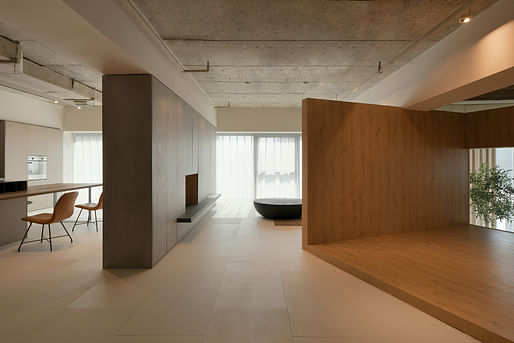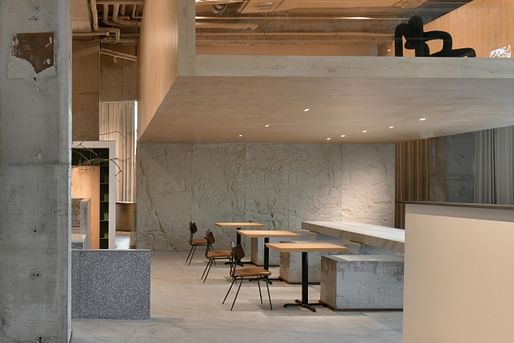
Chinese practice HOOOLDESIGN have completed a showroom and living quarters inspired by the human journey through urban paths and alleyways. Titled “The Streets,” the project uses a blend of stone, terrazzo, timber, concrete, and glass to create a 460 square meter (5000 square foot) space anchored by a cantilevered timber exhibition box.

The project is situated in the city of Taiyuan, approximately 250 miles southwest of Beijing. Drawing inspiration from the city’s historic network of streets, alleys, courtyards, and caves, the designers sought to capture the emotional connections between people on an urban level, and recreate it in a single interior space.

“The design takes street life as the starting point,” the team explain. “Space is a medium which connects people, and streets and lanes have the ability to create a dynamic, lively atmosphere. Our design reflects on the experience of streets and lanes, expressed through products which place life and activity at their source.”

Rather than establishing a rigid axis for the organization of the space, the team replaced a formal grid with a concept of paths. “While an axis uses lines to determine three-dimensional planes, and define movement across a vertical structure, pathways regard the building as a whole, allowing for the existence of non-directional structures,” the team add.

The natural human movement through the space helped to determine the spatial organization of the showroom, resulting in a strong variety in levels, heights, volume, and activities throughout the project’s winding arrangement. “There are winding paths, quiet areas, and then sudden bright zones,” the team explain. “Spaces are above and below, seated and standing, never limited to the experience of a single latitude.”

To emphasize vertical movement, the scheme contains multiple inhabitable boxes and platforms, with some containing a coffee area, display area, video room, and master bedroom. The boxes have been designed with the flexibility to move, twist, and adapt in response to future needs, as well as to alter the perceived sightlines, volumes, and atmospheres within the space.

“The free scattering of the boxes and overhangs naturally reflect the urban street, landscapes, and courtyards,” the team conclude, “forming a rich, vital street life, and a return to a warm society.”
No Comments
Block this user
Are you sure you want to block this user and hide all related comments throughout the site?
Archinect
This is your first comment on Archinect. Your comment will be visible once approved.